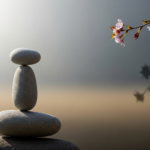Extreme longevity
People claim they want to live to be 100, yet is that a good thing? How you get there may make all the difference. Here’s my take on Blue Zones and the prospect of living to 100. “Blue Zone” is a nonscientific term popularized twenty years ago by Dan Buettner, a National Geographic explorer who studied five geographic regions where many people live to be over ninety or 100. His book, The Blue Zone Secrets to Living Longer, is available on Amazon. Netflix has a limited series based on the book “Live to 100: Secrets of the Blue Zones.” The Zone towns are scattered throughout the world, including Icaria (Greece), Sardinia (Italy), Okinawa (Japan), the Nicoya Peninsula (Costa Rica), and Loma Linda (California).
The five pillars of the blue zones
In a nutshell (pun intended), the five pillars of the Blue Zones, which represent key lifestyle factors associated with longevity and better living are: a plant-based diet (read: lots of veggies and nuts), regular physical activity (read: no couch potatoes), strong social connections (read: have a tribe), stress management (read: develop coping skills), and have a sense of purpose in life (read: a reason to get up every day). According to researchers, a true purpose is personally meaningful and has a positive impact on the lives of others. There are several other pillars, including the Blue Zone Food Guidelines. A cottage industry has emerged featuring lifestyle interventions, Blue Zone travel, nutrition coaching, health supplements, farm-to-table restaurants, and many, many cookbooks. Numerous towns, including mine in Arizona, are jumping on the bandwagon and have developed programs to help their citizens age well and stay healthy, inspired by the Blue Zones.
Okinawa losing its blue zone rating
However, there are critics of this longevity theory. While the Blue Zone pillars of healthy eating and regular exercise are undoubtedly beneficial for us, many scientists believe that genes, rather than lifestyle, are the primary determining factors in how long we live. Most people have heard stories about Grandpa or Grandma, who smoked like a chimney and drank moonshine until the day they died in bed at 105. Yeah, that’s probably genes. For the most part, what we eat and how we interact with those around us can lead to a longer and healthier life. Consider Okinawa, Japan, which has reportedly fallen out of the Zone, primarily due to younger generations not adhering to the five pillars. Young Japanese adults prefer city to country life and often consume a Western diet that includes junk and processed foods (read: Big Macs and KFC). Due to this shift, Okinawans are not living as long as they did when the Zone theory was created.
Future for a blue zoner
Naysayers aside, a person may live to 100 following this method. But if you get there, what will your everyday life be like? Moreover, what will your quality of life look like? Which family members will still be around? Who will your friends be? Where will you live? How will you get around for appointments or shopping? Will you be able to travel? Finally, and most essential for me, what will I do for fun? Based on my twenty-five years of advocating for seniors, I have interacted with many Nonagenarians (aged between 90 and 99) and Centenarians (100+). Life near the end of the range isn’t all it’s cracked up to be. Getting mentioned on the Today Show when you reach 100 may be the most fun you have. This article offers a glimpse into life at ages 90-100+: “Denmark conducted one of the few national surveys of nonagenarians and octogenarians. The researchers found that the majority had some form of disability. They noted that 10 percent of octogenarians and 55 percent of centenarians live in nursing homes, while dependency rises from approximately 30 percent to 70 percent. Most over eighty live alone and often have very few people to talk to. Meanwhile, stories of abuse or television footage from inside nursing homes create a grim image.” Let’s not forget about dementia. According to the Alzheimer’s Association, the risk of developing Alzheimer’s disease increases with age. About one in ten people aged 65+ develops Alzheimer’s disease. This risk rises to one in three by age 90.
Quality of life preferred over quantity
The bottom line is that not everyone wants to live to be 100. A 2024 survey by Medtronic and Morning Consult found that nearly two-thirds of U.S. adults would prefer a shorter, healthier life over a longer one with health issues (read: quality over quantity). The Blue Zones are great, but instead of relocating to one, perhaps the focus should be on adopting the pillars to maintain a healthy, productive, and happy lifestyle at every age. Eating a plant-based diet rich in veggies and nuts, engaging in enjoyable activities and staying away from the couch, forming friendships in a supportive community, reducing stress and stopping worrying, and looking forward to tomorrow can bring numerous benefits to both the young and the old. Living a healthy life as you age is more important than the goal of reaching 100.
Althea Halchuck is a patient advocate.























![New data reveals the massive pay gap for women ER doctors [PODCAST]](https://kevinmd.com/wp-content/uploads/Design-4-190x100.jpg)
